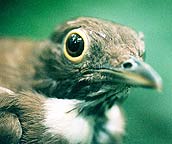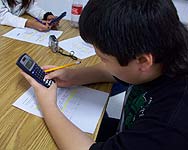On Change
Posted on January 15th, 2009 - 1:00 PMMarcus Peacock is EPA’s Deputy Administrator.
My mother was born two weeks before Lindbergh crossed the Atlantic. She has witnessed amazing changes in her life: the advent of air transportation, the proliferation of television, the near eradication of scourges like small pox and polio, men walking on the moon, the internet. Yet when I asked her how she felt about these changes, I did not get the response I expected. She shrugged. “Yes, things have improved a lot.” That was it.
Deep in middle age, I now understand that answer. The time scale our brains work with is easily swamped by the broader march of technology. After a dash of initial wonder, we just assimilate advances and move on. A few decades ago, every Christmas Day my family would crowd around a phone in our house and have hurried static-filled ‘long distance’ conversations with relatives in other lands. Two weeks ago one of my kids got a call from a friend. My daughter was walking in the woods. Her friend was sitting in a cafe in Florence, Italy. This does not amaze them. It no longer amazes me. In fact, I can’t really remember how we got to this place. It just happened.
Today the Administrator signed a proposed rule modifying how EPA determines the Air Quality Index for fine particle pollution. As proposals go, it is not terribly notable. And yet . . . this will be the first proposed rule issued by a federal agency that will allow the public to comment on the rule using a blog. The blog will be open from March 2 to March 11 which corresponds to public hearings on the proposal. Stay tuned to Greenversations for more information on how to participate. Mark it as a small step on the way to what I believe will be a dramatic change in the way the federal government crafts rules and regulations. A small step, but one that, with others, will accumulate to the point where the government will be able to produce better quality rules much more quickly than in the past.
We live in the Information Age. It is sweeping over us like advancing waves on a beach. Federal agencies can either seize the tools that are coming from this change or just let the tide pick us up and deposit us in a new place. EPA is choosing to seize the day. We are not doing this because we want to amaze people with whiz-bang Web 2.0 technology. We do this because when someone in the future is asked about the changes they have seen in the environment, they will just shrug their shoulders and say, “Yes, things have improved a lot.”

 Each week we write about the science behind environmental protection.
Each week we write about the science behind environmental protection.  About the Author: Karl Berg is currently a Ph.D. student at Cornell University in Ithaca, NY, and is looking forward to a career that will combine his interests in animal behavior and conservation. His master’s research was funded by an EPA
About the Author: Karl Berg is currently a Ph.D. student at Cornell University in Ithaca, NY, and is looking forward to a career that will combine his interests in animal behavior and conservation. His master’s research was funded by an EPA  In my quest to understand the “dawn chorus,”—why different bird species chime in at different times—I chose my research site in the tropical forests of Ecuador where hundreds of bird species occur together. Tropical forests are the most threatened terrestrial ecosystems on Earth and have large and diverse bird populations. As more forests are cut one immediate change that takes place in remaining forests is the quantity and quality of forest light.
In my quest to understand the “dawn chorus,”—why different bird species chime in at different times—I chose my research site in the tropical forests of Ecuador where hundreds of bird species occur together. Tropical forests are the most threatened terrestrial ecosystems on Earth and have large and diverse bird populations. As more forests are cut one immediate change that takes place in remaining forests is the quantity and quality of forest light. Back at Florida International University, we identified 130 bird species from the recordings and logged the times of 25,000 songs. My research showed that tropical birds began to sing only when they saw light. Big-eyed birds that foraged high in the forest canopy sang earlier. The late risers were birds with small eyes in the dark, dense underbrush. The control mechanism then, was a combination of ecological and morphological traits synchronized with an atmospheric one.
Back at Florida International University, we identified 130 bird species from the recordings and logged the times of 25,000 songs. My research showed that tropical birds began to sing only when they saw light. Big-eyed birds that foraged high in the forest canopy sang earlier. The late risers were birds with small eyes in the dark, dense underbrush. The control mechanism then, was a combination of ecological and morphological traits synchronized with an atmospheric one. My “apprentices” used a Watts meter to measure computers, printers, microwaves, pencil sharpeners, and projectors during use and when they were turned off but plugged in. Next, the students calculated the estimated annual cost of using the equipment based on 9.86 cents per Kilowatt/hour and multiplied this by the number of each and estimated time used.
My “apprentices” used a Watts meter to measure computers, printers, microwaves, pencil sharpeners, and projectors during use and when they were turned off but plugged in. Next, the students calculated the estimated annual cost of using the equipment based on 9.86 cents per Kilowatt/hour and multiplied this by the number of each and estimated time used.